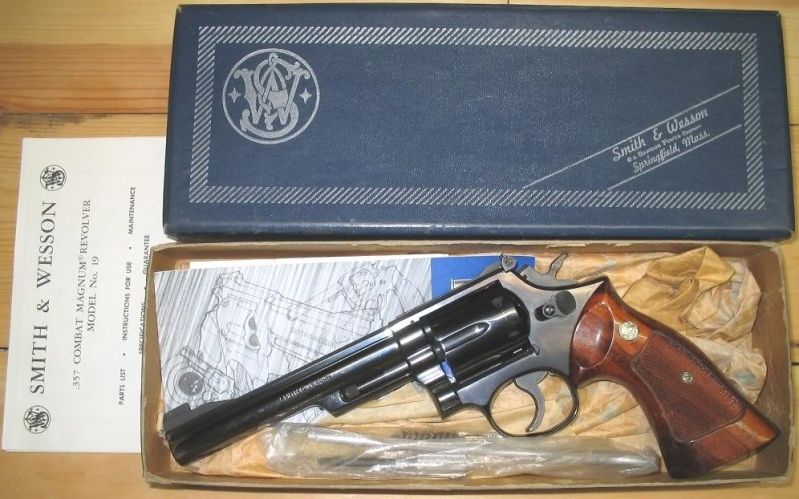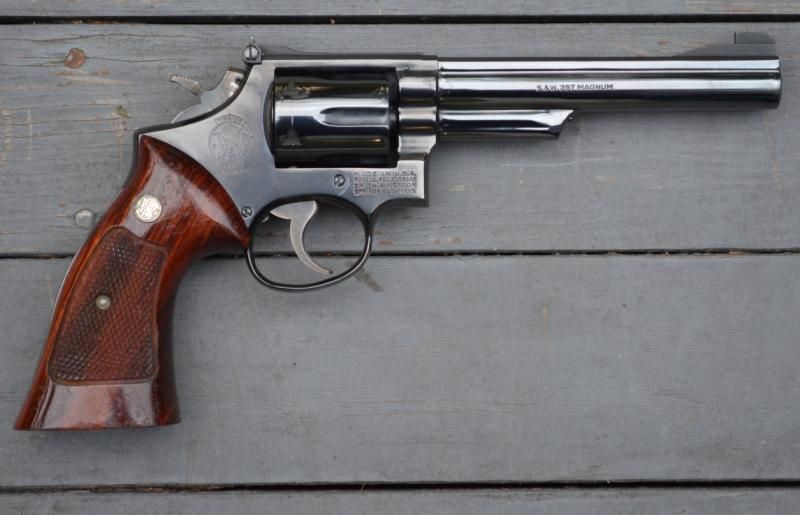I finally found just the right first revolver for me, a S&W 19-3 that is a decade and a half older than me, but made just the way I want it and beautiful to boot.
Here she is:

However, there is a few marks on her that I need your opinion on. Some were there when I bought her, and some have only become visible now that Ive run 300 rounds of Magtech .38 LRN (158gr) and 12 rounds of Magtech .357 SJSP (158gr) through her.
First, blank spots on the cylinder above the chambers:

These were definitely not there when I bought her, and not very pretty IMO. I think that these spots are lead residue from the LRN ammo Ive been shooting, and I wonder if they are an indicator of something not being as it is supposed to? Signs of lead residue can be seen on the cylinder face as well, which did not have any significant marks before I started shooting the gun:

Is this normal? I have not noticed any lead spattering while shooting, but I worry that I might have a cylinder gap or and endshake problem on my hands.
There is also a drag line on the recoil shield, that were there when I bought the gun:

I wonder of the ejector rod is properly mounted, or if this is normal? The cylinder drags a little on opening and closing, and In my mind it should be more smooth.
Apart from these concerns, I am loving my very first revolver She is a joy to shoot, accurate and with a smooth and crisp trigger like no gun I have shot before. If she needs a trip to the smith for tuning, so be it, I want this gun to last.
She is a joy to shoot, accurate and with a smooth and crisp trigger like no gun I have shot before. If she needs a trip to the smith for tuning, so be it, I want this gun to last.
Here she is:

However, there is a few marks on her that I need your opinion on. Some were there when I bought her, and some have only become visible now that Ive run 300 rounds of Magtech .38 LRN (158gr) and 12 rounds of Magtech .357 SJSP (158gr) through her.
First, blank spots on the cylinder above the chambers:

These were definitely not there when I bought her, and not very pretty IMO. I think that these spots are lead residue from the LRN ammo Ive been shooting, and I wonder if they are an indicator of something not being as it is supposed to? Signs of lead residue can be seen on the cylinder face as well, which did not have any significant marks before I started shooting the gun:

Is this normal? I have not noticed any lead spattering while shooting, but I worry that I might have a cylinder gap or and endshake problem on my hands.
There is also a drag line on the recoil shield, that were there when I bought the gun:

I wonder of the ejector rod is properly mounted, or if this is normal? The cylinder drags a little on opening and closing, and In my mind it should be more smooth.
Apart from these concerns, I am loving my very first revolver




